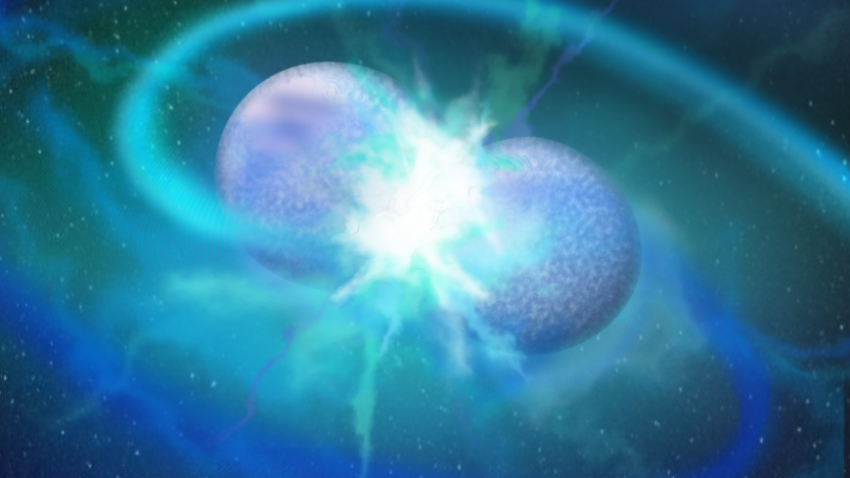2 stars covered in unusual elements have a puzzling origin story
Experts are still unsure how exactly the newfound stars were formed.

Astronomers have spotted a pair of bizarre stars, unlike any ever seen, covered in a mysterious buildup of unusual chemicals. These cosmic oddballs may have been born through a very rare type of merger between two stars at different ends of their respective life cycles.
Researchers detected the two stars, named PG1654+322 and PG1528+025, while scanning the sky using data collected by the Large Sky Area Multi-Object Fibre Spectroscopic Telescope (LAMOST) in China and the Large Binocular Telescope Observatory in Arizona.
They are a type of pre-white dwarf star, which is a star slightly too large to be considered white dwarfs — the dense remnants left behind when medium and small stars run out of fuel to burn. However, unlike other known pre-white dwarf stars these new stars, which have not been designated a proper name yet, have a high abundance of carbon and oxygen near their surface.
The nuclear fusion of helium at the hearts of stars forms these chemicals, so signatures of these elements are not unusual in some stars. But usually these elements reach the stellar surface only when a star is nearing the end of its life, after it has used up most of its helium. However, the size and luminosity of these new stars suggest that they are still helium-rich at their cores. The researchers' estimates suggest they have been burning long enough to create the levels of carbon and oxygen observed by astronomers.
Related: 15 unforgettable images of stars
"Normally, we expect stars with these surface compositions to have already finished burning helium in their cores, and to be on their way to becoming white dwarfs," lead author Klaus Werner, an astronomer at the University of Tübingen in Germany, said in a statement. "These new stars are a severe challenge to our understanding of stellar evolution."
In a separate study, published Jan. 7 also in the journal Monthly Notices of the Royal Astronomical Society, a different group of researchers proposed a possible explanation for the puzzling origin of these new stars — a stellar merger, where two stars collide to form a single star.
Sign up for the Live Science daily newsletter now
Get the world’s most fascinating discoveries delivered straight to your inbox.
"We believe the stars discovered by our German colleagues might have formed in a very rare kind of stellar merger event between two white dwarf stars," lead author Marcelo Miller Bertolami, an astronomer at the National University of La Plata in Argentina, said in the statement.
Star mergers can happen in either star clusters, large groups of thousands or millions of stars closely packed together, or more commonly in binary systems where two stars circle each other in an orbit that eventually destabilizes, causing the plasma of the smaller star to be sucked up by the larger one. However, in order to create the new type of pre-white dwarfs, the star merger required would have to have been very specific.
"Usually, white dwarf mergers do not lead to the formation of stars enriched in carbon and oxygen," Miller Bertolami said in the statement, "but we believe that, for binary systems formed with very specific masses, a carbon- and oxygen-rich white dwarf might be disrupted and end up on top of a helium-rich one, leading to the formation of these stars."
In this scenario, carbon and oxygen from an older and smaller helium-depleted white dwarf would end up forming a shell around a much younger and larger helium-rich white dwarf as the latter slowly pulls in the contents of the former. This specific type of binary merger, involving two white dwarfs at different points in their life cycle is likely to be extremely rare, according to the statement.
This explanation is the current best guess for how the newly discovered stars may have formed. However, the researchers still need to produce a clear and refined model for the type of binary system and merger they have predicted in order to irrefutably prove their theory, according to the statement. Further research "could also provide a deeper insight into the late evolution of binary systems and how their stars exchange mass as they evolve," according to the statement.
The discovery of these bizarre pre-white dwarf stars is described in a paper published Feb. 12 in the journal Monthly Notices of the Royal Astronomical Society.
Originally published on Live Science.

Harry is a U.K.-based senior staff writer at Live Science. He studied marine biology at the University of Exeter before training to become a journalist. He covers a wide range of topics including space exploration, planetary science, space weather, climate change, animal behavior and paleontology. His recent work on the solar maximum won "best space submission" at the 2024 Aerospace Media Awards and was shortlisted in the "top scoop" category at the NCTJ Awards for Excellence in 2023. He also writes Live Science's weekly Earth from space series.









